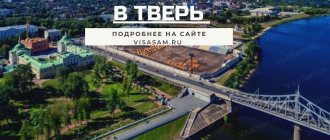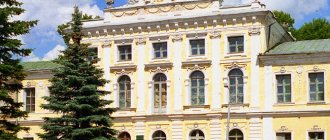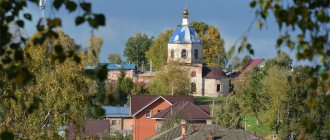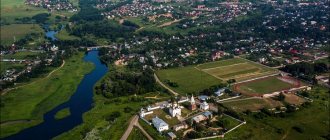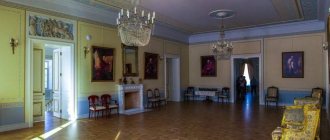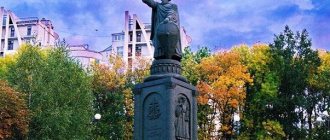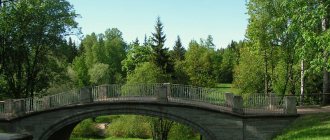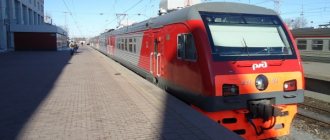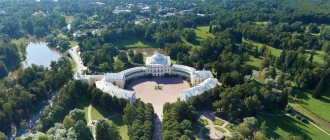What to see in Tver - in a city that is almost nine hundred years old and which itself is one big attraction? First of all, the Kremlin, or rather, what is left of it. Then the embankment.
You can also look at Lenin Square. Yes, even if there is something like this in every former Soviet city, but Tverskaya is surrounded by buildings of the 18th century, and its very shape is unusual - octagonal.
And someone, visiting Tver for just one day, will want to look at the Imperial Palace. Or the Nativity Cathedral. There is plenty to do in the city, located between the arrogant, noisy Moscow and the cold, reserved St. Petersburg.
Read a brief history of the city's main attractions and decide what to see in one day in Tver. Museums, embankments or restaurants...
Tver: history of the city, summary
The history of Tver goes back more than 10 centuries, if we focus on the first mention in the chronicles (1135 in the charter and 1208 in the chronicles). Historians joke that when Tver was already a full-fledged city, Moscow was still a remote village in a swamp.
City Day is traditionally celebrated on the last Sunday of June, starting in 1135.
The city received its name from the Novgorodians in honor of the Tvertsa River; for centuries it did not change, only in Soviet times there was Kalinin. Another version is that the name was originally “Tverd” - a stronghold, a fortress on the Volga.
Coat of arms of the city The coat of arms of the city symbolizes the close connection between power and Orthodoxy. Tver is very rich in cultural and religious places - monasteries, churches, chapels, holy springs. The patron saint of the city is Mikhail Tverskoy, who once saved the city, but was then brutally tortured in the Golden Horde, for which he was canonized.
Another key figure is Afanasy Nikitin, a Tver merchant of the 13th century, who made an outlandish journey to India in those years and described it in his diaries “Walking across Three Seas.”
In the 12th-13th centuries, Tver claimed to be the capital of Ancient Rus', but could not compete in treachery with the Moscow princes. In the Middle Ages, Tver was a small but well-defended fortress at the confluence of the Volga and Tmaka, now it is the historical center of the city.
The next significant historical era for Tver is associated with Catherine. The Empress, on her trips from Moscow to St. Petersburg, stopped in Tver - a luxurious Travel Palace was built for her. Tver gradually changed its architectural appearance from wooden to stone; the city center was built up with remarkable merchant houses that have survived to this day.
Next is the imprint of the Soviet era, the era of Stalinism, the last years - Tver accepted everything and organically digested it.
To understand about Tver, its history and significance in the formation of the Russian state, it is not necessary to read heavy volumes of research by historians or literary scholars; a lot can be gleaned from ancient Russian literature.
What to see in Tver in 1 day
The city is located on both banks of the Volga, but at the same time it is quite compact, which will be a definite plus for you. Moving between interesting objects will not take much time. The main points of tourist attraction can easily be visited in one day, if you do not delve into the study of the exhibitions of local museums and exhibition centers. It is best to start your introductory walk early in the morning so that you have time to see all the interesting things.
For example, the Tver Kremlin. It is a must visit. This is generally the best place to start your acquaintance with the city. Nearby there is a magnificent example of 18th century architecture - the Imperial Travel Palace, in the premises of which there is an art gallery. From here, take a leisurely step in the direction of the Tver Academic Theater. Next, head towards Lenin Square and the Cathedral of the Ascension of the Lord. The next point of your walk will be Sovetskaya Square and the Museum of Communications. You can reach it along the street, which is also called Sovetskaya. Along it you will go further towards the museum and exhibition center and two religious buildings. Not far from each other are the Catholic Church and the Cathedral Mosque, built in the New Moorish style.
From here it’s just a couple of steps to the park with the unusual name “Vokzal”. On its territory there are abandoned historical buildings, including the buildings of the provincial hospital of the 18th century. The architecture is in disrepair, but if you are interested in studying such objects, then you will definitely like it here. If you prefer attractions of a different kind, then straight from the Catholic Church follow towards the Novovolzhsky Bridge. Along it you will cross to the other side of the Volga, where there is also something to explore. The Museum of Tver Life, the River Station and other interesting objects deserve attention.
Tver Kremlin
The fortification was destroyed and rebuilt many times. The first wooden fortress was built in the 12th century, and that’s when the history of Tver began.
In 1238, the Mongol-Tatars arrived and did a fair amount of mischief, but most importantly, they razed the fortifications to the ground. They were restored. And at the end of the same century, the Transfiguration Cathedral was built.
The Kremlin finally burned down in 1763. It was not restored again - there was no need for it now, and only earthen ramparts remained from it. But lovers of history and all antiquities, thinking about what to see in one day in Tver, are interested in just such ruins. You can explore them independently or under the guidance of guides.
If you like the stories of a professional historian, order the interesting story “Tver Yesterday and Today.” The guide will tell you about the events of the Middle Ages, about enemy raids and other terrible things.
Historical Tver: places the country is proud of
So that a walk around historical Tver does not pass as a simple contemplation of beautiful houses and laconic monuments (although this will bring pleasure), it is worth learning at least a little about what makes local cultural sites so remarkable.
We recommend reading:
Almost Rio de Janeiro. Guide to Gelendzhik
By the way, everything more or less significant is located quite compactly and fits within the framework of a simple route. In this case, attractions will open one after another, the only thing is not in the chronological order of occurrence and not in order of importance.
Volga embankment in Tver
Each section along the Volga in the territory has its own name. In the city center, there are two embankments on the right and left banks of the river.
From the end of Sovetskaya Street it is convenient to go to one of the right banks - Stepan Razin embankment. Among its important details are the classical buildings and the monument to Andrei Dementyev, a poet, writer, editor of some famous Soviet publications and a native of Tver.
Behind the Novovolzhsky Bridge it continues with the Mikhail Yaroslavich embankment. It is the most visited, as it is located near the City Garden of Tver and the Palace Garden in front of the Imperial Palace. It offers a wonderful view of the openwork trusses of the Starovolzhsky Bridge.
On the upper promenade there is an unusual monument to A.S. Pushkin: the poet seemed to have stopped to rest at the embankment fence and remained here forever in stone. In the City Garden you will find a Ferris wheel and another monument to Mikhail Tverskoy. Pay attention to the Zvezda cinema and the Voroshilov Riflemen's House located right there - architectural monuments of the pre-war years. A staircase leads to the lower tier; pleasure boats depart from its pier in the summer.
The left bank embankment is named after Afanasy Nikitin, and a monument to him is erected here. Afanasy Nikitin is a famous Tver navigator of the 15th century who visited India. From here on the pedestal is the bow of the ship, decorated with the head of a horse. Behind it stands the Church of the Three Confessors. The Zavolzhsky Park runs along the promenade - a pleasant place for leisurely exercise, viewing the panorama of the other side, or even relaxing on the City Beach in the summer. There is another monument in it - to the Submariners of the Second World War.
At the confluence of the Tvertsa River and the Volga stands an outstanding landmark on the left bank - Tver River Station, built in 1938. In its center there are two round parts with columns. The beautiful, majestic building, unfortunately, has not been used for a long time and is therefore actually ruins. It is hidden from the water by an alley, in front of which there is an art object in the form of the letters “TVER”.
Across Tvertsa there is a cozy but little popular coastal street called the Volga River embankment. Along it stand old and new mansions and the St. Catherine's Monastery.
Imperial Palace
Another name is Travel. Its author is the namesake of the Tver traveler, architect Pyotr Nikitin.
Members of the imperial family, as you know, loved to ride from St. Petersburg to Moscow and back, which is tiring even for a modern traveler. This is why the palace was built - so that the Romanovs could rest along the way. Catherine II was the first to visit here in 1767.
Travel Palace in Tver
Today the palace houses an art gallery. For those who have not yet decided what to see in Tver in one day, but really want to get to Putevoy, important information:
- Entrance from Sovetskaya street.
- There is parking.
- They let in twenty people at a time and only for two hours.
- Ticket price: 350 rubles.
- It's better to use an audio guide.
Take these nuances into account when planning a tour of Tver.
Stepan Razin Embankment
This beautiful embankment is located in Tver on the right bank of the Volga. It stretches for 1.2 km through the historical center of the city from the stadium to the City Garden. The first stone houses on this site began to be built in the middle of the 18th century. For the development of the embankment, the “solid façade” style, which was used in St. Petersburg, was used.
Today, Tverskaya embankment, named after the leader of the uprising, Don Cossack Stepan Razin, is a monument to urban planning. Many of the houses located on this street were originally one-story, but later second floors were added. In addition to the former merchant buildings on the S. Razin embankment, there are noble mansions, the “House of the Voroshilov Riflemen” - an architectural monument of the Stalin era, and the “Zvezda” cinema, built in the style of late constructivism.
Address: Stepan Razin Embankment, Tver, Russia.
Proletarka's Courtyard
This small “city within a city” was built in the mid-19th century for workers and their families. It is also called the Morozov Barracks - named after the businessman Savva Morozov. The complex included not only residential buildings, but also a hospital, laundry, pharmacy, and theater. There was even a park, although in those days city gardens were not laid out for ordinary workers. In many ways, all this appeared thanks to Morozov’s wife, who was very worried about the workers of the local factory.
Proletarka's yard today is sometimes called the Tver slums or communal hell. People still live here, despite the disrepair of the buildings. And although it’s scary to enter the Morozov barracks, and most of the “apartments” have long turned into brothels, guests of the city every now and then look into this gloomy area. It could serve as a good setting for a historical or horror film.
Yard of Proletarka in Tver
Other attractions are the Nativity of Christ Monastery, the botanical garden, the Church of John the Baptist, the Starovolzhsky Bridge, the Museum of Tver Life, the Tver Art Gallery.
You can see Tver in one day, accompanied by a guide, by choosing an unusual tourist program.
Afanasy Nikitin Embankment
The river station is located on the Afanasy Nikitin embankment. From here you can go on a boat trip, but first you should take a walk and see the sights. This territory, called Zavolzhsky Posad, was inhabited and rebuilt since the 14th century. When all the wooden buildings burned down during the fire of 1763, the residents built stone houses here. In the mid-13th century, the Otroch Monastery was founded on the shore. In the 30s of the last century it was destroyed due to the reorganization of space. Of the monuments, only the Cathedral of the Assumption of the Blessed Virgin Mary remains. This is where the countdown of buildings located on the embankment begins.
The temple was built in 1722 in the Naryshkin Baroque style. In 1799-1800, its interior walls were decorated with paintings by icon painter Matvey Chelpovsky. In Soviet times, the cathedral was closed; its premises housed the exhibition halls of an art gallery. In 1994, the temple was returned to the Russian Orthodox Church, and its complete restoration was carried out, but in the period from 2005 to 2010, despite public protests, the ancient painting was completely destroyed. The temple is active and services are regularly held there. Nearby is the River Station, which occupied most of the former monastery courtyard.
On the embankment there is the Church of the Resurrection (Three Confessors). It was built in 1731. During Soviet times, the frescoes and two tiers of the bell tower were destroyed. In the 90s, restoration work was carried out, after which the temple was opened to the public. A monument to Afanasy Nikitin is erected in front of it. It was created by sculptors S.M. Orlov and A.P. Zavalov designed by architect G.A. Zakharova. The opening took place in 1955.
We recommend reading:
Weekend tours
A little further is the first building in Tver built in the classicist style. This is the house (No. 44) of the Zubchaninov merchants, in which at one time the Theological School was located. In the neighboring house there is an Art College named after. Venetsianova. There is a monument to submariners in the park on the embankment. The infrastructure of the park is conducive to walks; the park area has attractions and a small Ferris wheel. There is a stage area designed in the form of an amphitheater, 2 sports grounds and 4 children's playgrounds. On the Afanasy Nikitin embankment there are the Golden Plaza, Hyde Park, and Governor hotels.
The River Station building, built in 1938, is also of interest to lovers of architectural solutions of the Stalin era. It is located at the confluence of the city’s two main rivers – the Volga and Tvertsa. Today, restoration and restoration work is being carried out here (in 2021 the roof collapsed, then part of the rotunda collapsed). Cash desks are only open during the navigation period. Excursion boats depart from the pier.
Where to go for tourists in Tver: interesting places
Tver is not only historical sights, but also a whole range of modern entertainment. You should definitely see a number of fountains, sports facilities, interesting places, and enjoy shopping in modern shopping complexes.
Cinema "Zvezda"
The building is in the post-constructivist style, erected according to the design of architect Kalmykov in 1937. “Zvezda” was systematically restored without changing its appearance. The cinema looks like binoculars; according to another version, it looks like a tractor during the first five-year plan.
In the post-war years, premiere screenings of new films were held at Zvezda. During breaks, spectators listened to a live orchestra in the foyer and visited the winter garden. In the late 90s, the building was partially used for trade. The cinema has been functioning for its intended purpose for 80 years. The building has 6 equipped rooms for watching films. Since 1969, the cinema has been visited by famous artists, whose autographs and wishes can be seen by every tourist.
Address: st. S. Razina, 1.
How to get there: bus 20, minibus 211 (stop “Gorky Library”).
Opening hours: Mon-Sun: 9.00-24.00.
Get directions
Shop "Tiberias"
The souvenir shop has been operating for more than 10 years. The assortment includes traditional items from the Tver land (Torzhok, Likhoslavl, Tver district, Kimr, Staritsa, Bezhetsk). You can purchase products made from the famous flax, birch bark boxes, toys made of clay and wood.
"Tiberias" offers souvenirs of its own production. In addition to trading activities, the company conducts excursions for children and adults.
Address: st. Sovetskaya, 18.
How to get there: trolleybus 5, bus 11, 7, 9, 104, 154, 20, 23 (stop “Gorky Library”).
Opening hours: Mon-Sun: 11.00-18.00.
Get directions
"Retail Park No. 1"
A modern shopping center, opened in 2014. The complex houses grocery, electronics, clothing, accessories, and toy stores. There is a cafe in the park; on weekends, exhibitions of emerging designers and traditional seasonal fairs are held. On holidays, the center organizes show programs and performances by pop stars.
A modern children's playground has been erected on the territory of the park, partially built with funds from the Natalia Vodianova Foundation.
Address: Oktyabrsky Prospekt, 103.
How to get there: minibuses 28, 30, 31, 36, 33, trolleybus 3 (stop “Ul. Raskovaya”, “Leroy Merlin”).
Opening hours: Mon-Sun: 10.00-22.00.
Get directions
"Territory of quests"
The company invites tourists to be the hero of one of 12 games. You can choose adventure, detective, treasure hunting, or horror genres. Events are organized for children and adults.
Address: st. Malaya Samara, 9, building 1.
How to get there: buses 41, 10, 11, 12, 15, 20, 23, 31, trolleybus 5 (stop “Ul. Vagzhanova”).
Opening hours: Mon-Sun: 10.00-01.00.
Get directions
Sports ice complex
The ice arena is distinguished by the quality of its surface and thoughtful lighting, which will undoubtedly be appreciated by every skating enthusiast. You can rent a skating rink for a few hours or go skating during your free time from training. The process is accompanied by rhythmic music. The building has a gym and a football ground.
Address: st. P. Savelyeva, 44, building 1, 3rd floor.
How to get there: bus 3, 41, 30, 8, 6, trolleybus 4, 3 (stop “Ul. Khromova”, “Mn Yunost”).
Opening hours: Mon-Sun: 8.00-22.00.
Get directions
Tennis
The center, equipped to modern standards, has 5 professional courts. “Rumyantsevo” organizes training sessions, provides halls for rent, and holds tennis competitions. After the game, you can relax in the sports and fitness center or visit a professional tennis equipment store. The center has a café and sauna open daily.
Address: st. Stepanova, 19.
How to get there: minibuses 202, 24, 7, 205, 222, 177, 106, buses 118, 138, 128, 107, 154, 36 (stops “Vagzhanov Factory”, “Timiryazev”, “Rozhdestvenskie Gorki”, “ Palace of Children and Youth").
Opening hours: Mon-Sun: 8.00-23.00.
Get directions
Goat Museum
The city has long been famous for its products made from goat skins. The goat is an integral symbol of Tver. A museum dedicated to the animal was opened in 2008. The gallery houses exhibits not only from the Verkhovolga region, but also from other parts of the country. The collection is replenished by visitors and the city administration. For people with the last name Kozlov, admission is free. The museum employee leaves a note about such tourists in the “Book of Honorary Visitors.”
There are 5,000 exhibits in three rooms of the building: figurines made of different materials, dishes, badges, bells. Interesting full-length animal figures, humorous collection.
Address: Central district, st. Zhigareva, 5.
How to get there: by bus 3, 7, 15, 24, 30, 36, 52, 56, 106, 116, 204, 205, 208, 223, minibus 228 (“Globus - River Station”)
Opening hours: Tue.-Sat.: 10.00-18.00, Sun.: 12.00-19.00, Mon. - day off.
Get directions
Mikhail Krug Museum
An exhibition dedicated to the chansonnier is located in the Lazurny club. He was often visited by the Circle. In the red and blue hall, the artist’s personal belongings, a recognizable hat and cane, are displayed in glass cases. The walls are covered with memorable photos of Krug, family, friends, fans.
The exhibition was opened in 2007 on the 5th anniversary of Mikhail’s death. The organization of the museum was carried out by the artist’s sister, the club’s management.
Fans of the singer can visit the monument to the Circle, located on Radishchev Street.
Address: Tchaikovsky Prospekt, 6, building 1.
How to get there: bus 138, 111, 114, 107, 128, 118, tram 5, minibus 7 (stop “Kaposvar Square”).
Opening hours: Mon-Sun: 12.00-05.00.
Get directions
Museum of Tver Life
The exhibition is part of the regional gallery and is dedicated to urban culture of the 18th and 19th centuries. On the territory there is the house of the merchant Arefiev, a carriage house, and a manor house. These are memorable places that must be visited, the only buildings in the region built in the Baroque style.
The estate has preserved antique furniture, utensils, and trinkets. During the excursion, they recreate the atmosphere of an ancient Russian tea party. The museum has a shop with a wide range of souvenirs.
Address: st. Gorky, 19/4.
How to get there: minibuses 542, 228, buses 233, 7, 9, 12, 15, 30, 44, 104, 205 (River Station stop)
Opening hours: Wed.-Sat.: 10.00-18.00, Mon. – day off, Tue. – excursion day.
Get directions
Regional Art Gallery
The exhibition, founded in 1866, occupies 3 floors. The collection includes ancient and modern paintings, frescoes, and icons. The dishes in the Porcelain Cabinet, sculptures, graphics, and folk art items deserve special attention.
Works of art are divided by topic and time of writing for the convenience of visitors. In total, the largest Russian museum has more than 32 thousand exhibits.
Address: st. Sovetskaya, 3.
How to get there: buses 11, 104, 23, 41, 52, 9, trolleybuses 5 (st. Khimik stop, Tverskaya Square, Mira Square).
Opening hours: Wed., Thu., Sat., Sun.: 11.00-18.00, Fri.: 11.00-20.00, Mon., Tue.: closed.
Get directions
Academic Drama Theater
An ancient Russian theater whose history goes back 270 years. Belongs to the category of historically significant places. For the last 40 years, the theater has been thriving under the leadership of Vera Efremova. The building, built in the neoclassical style, is distinguished by its monumentality and has retained its original appearance from its construction in 1745.
Productions at the Academic Theater are based on Russian and foreign classics. The troupe consists of 40 people, including honored artists of Russia.
Address: st. Sovetskaya, 16.
How to get there: by bus 6, 104, 11, 23, 154, 20, 36, by trolleybus 5, 7 (stops “Tverskoy Prospekt”, “Novotorzhskaya”, “Gorky Library”, “Tverskaya Square”).
Opening hours: Mon-Sun: 11.00-19.00, break: 14.00-14.30.
Get directions
Museum of M. E. Saltykov-Shchedrin
The exhibition dedicated to the writer’s work was opened in 1976. Saltykov-Shchedrin lived in a stone house built in the 17th century while serving as an official. The museum has 800 exhibits: personal belongings, drawings, documents of the writer and his family. The collection is complemented by paintings made by the artist Chumakov. The panel in a grotesque style depicts characters from the writer’s works. In addition to excursions, the museum holds literary evenings and conferences. In 2020, a complete reconstruction of the museum was organized.
Address: st. Rybatskaya, 11.
How to get there: bus 12, 7, 31, 23, 20 (stop. Sovetskaya Square, Moskovskaya Square, Vagzhanova Street)
Opening hours: Mon., Tue. – closed, Thu: 13.00-21.00, Wed., Fri., Sat., Sun.: 11.00-17.00.
Get directions
Living Museum "Gallery of Ceramics"
The exhibition is dedicated to the contemporary artist Anatoly Kamardin, who lived and worked in Tver. The graphics, panels, sculptures created by him are valued in Russia and abroad. The idea of the exhibition belongs to the artist. The ceramist decorated the façade with voluminous ceramic panels.
There is a souvenir shop in the ceramics gallery. In addition to the traditional excursion, tourists can pre-book a master class on clay modeling and visit Kamardin’s workshop.
Address: per. Diligence, 25a.
How to get there: public transport 2, 4 (stop “1st City Hospital”).
Opening hours: Mon-Sun: 11.00-20.00.
Get directions
See the city of Tver from the Volga River
Between the two central bridges near the Zvezda cinema, go down to the pier and buy a ticket for the river bus and ride on a boat (40 minutes or 1.5 hours). And during this time, imagine all the exhausting burden of the barge hauler - the Tver region was especially “loved” by barge haulers for its numerous shallows and oxbow lakes.
Or you might be surprised how the picturesque banks of the Volga are built up with numerous military units, factories, factories and industrial sites, and not with beautiful houses and parks.
Or just relax, exposing your face to the cool breeze and watching houses, districts, and bridges float by.
Before this, of course, go to the cafe “Arzu” (popularly “Dead Horse”), popular among Tver residents, it is located on the side of the cinema, buy takeaway food, go to the slope of the shore and have a picnic on the grass, watching the seagulls and fishermen.
Climb the tallest building in Tver
Delovoi, formerly a hotel built for the 1980 Olympics, is the tallest building in the city. Local residents aptly nicknamed it “The Glass” and “The Corn Cob” and they themselves are wary of going up to the observation deck and will definitely tell the legend: the building was designed with violations, it could collapse at any moment, and the architect of this miracle lives very close by in a townhouse and calculated, that if the tower falls, his house will not be damaged.
Fans of extreme sports, of course, will only be encouraged by such a legend, but in general, the bird's eye view of the city is worth a visit to Tver.
The business has a café with an emphasis on a panoramic view of the city.
Trekhsvyatskaya street
So, in 1763, a terrible fire broke out in the city, destroying almost the entire center and destroying the Kremlin. Catherine II personally supervised the restoration of Tver. The best architects were involved. The idea of the “ceremonial three-beam” was taken as a basis. As a result, Tver became one of the first Russian cities with a regular layout.
Trekhsvyatskaya street in Tver
From 1901 to 1975, a tram line ran along Trekhsvyatskaya Street. At one time, in the center of the street there was an old tram, which was used for trading purposes (beer, flowers, or telephones were sold in it). Then, unfortunately, it was removed.
Not far from Trekhsvyatskaya, on Radishchev Boulevard, there is (or sits) a monument to Mikhail Krug.
Monument to Mikhail Krug in Tver
Fans of chanson believe that this is the attraction you should see in Tver first. Non-fans believe that this monument is superfluous here.
Walk along Tver's Champs Elysees
Tchaikovsky Avenue among thinking young people (several buildings of the state university are located in that area) was called the Champs Elysees.
To get the full impression, it is worth walking along Tchaikovsky from Kaposvár Square to the railway station on the left side. At the very beginning of the route, go up to the top floor of the Geophysics building and look out the window - the street in perspective really resembles a Parisian one.
Considering that Stalin is the last style of architecture, as significant as classicism or empire style, a walk along the Tver Champs Elysees will bring pleasure in looking at the elegant houses of the 50s of the last century.
On the way, near the Faculty of Philology, you will meet a monument to Cyril and Methodius, who bashfully turned away from the building in reproach to the modern state of science.
You can finish your walk in the station waiting room. It is notable for the fact that for several years in a row it has won the competition for the title of the best waiting room and is a luxurious winter garden with hundreds of plants, singing birds, and beautiful benches. There is also a museum room on the platform where the imperial family stayed during trips on the October Railway.
Sources:
Author of the publication
offline for 2 months
